10 Azov Sea Facts You Might Not Know
Diverse water bodies are crucial for the sustenance of life on earth. They play a pivotal role in regulating the global climate, supporting rich marine biodiversity, enabling maritime trade across continents, and producing at least 50% oxygen on our blue planet.
While most of us know the largest and deepest seas like the Black sea or the Adriatic sea, we do not know much about the small yet geographically and geopolitically significant Azov sea.
An inland sea, the Azov sea is located in Eastern Europe and is connected to the Black Sea through the 4 km long Kerch Strait, whose narrowest point lies in the Azov sea.
Surrounded by the Taman peninsula on the eastern side of the strait and the Crimean peninsula on the west, the Azov sea is bordered by Ukraine in the northwest and Russia in the southeast.
Interestingly, the Azov sea is also known as the northern extension of the Black sea.
Archaeological evidence suggests that in prehistoric times, the Azov sea was a flourishing site dotted with neolithic settlements that were washed away by massive foods, ultimately leading to the formation of the Sea.
Let us look at the 10 mind-boggling facts about the Azov sea.
1. Azov Sea is the shallowest sea in the world
Azov sea is known for being the shallowest sea in the world. It has an average water depth of 23 feet or 7 m and a maximum depth of 46 feet. Water from the Azov sea flows into the Black sea, so it always retains freshwater with low salinity.
Azov sea covers an area of 39,000 kilometres with a total length of 360 km and is 180 km wide. On the other hand, the black sea spans 436,400 km2 and has a maximum water depth of 2,212 m and a volume of 546,000km3.
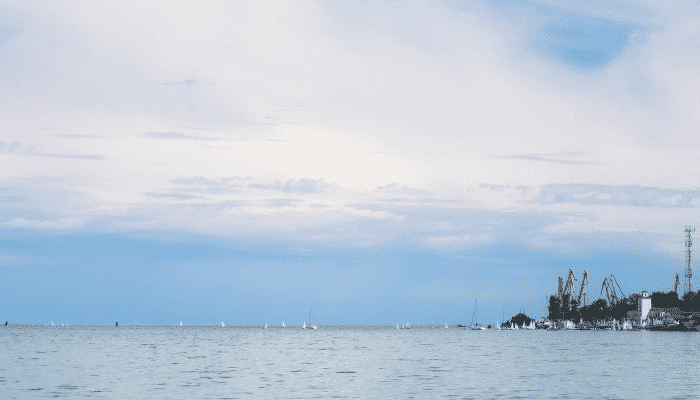
Azov sea has been a bone of contention between Russia and Ukraine; however, it is dominated by the former. If one were to go back to the Cold War, the Sea of Azov would have been the smallest sea of the nations that made up the erstwhile Soviet Union.
2. There are numerous folktales and theories regarding naming the Azov sea.
Different cultures and communities that lived along the coast of the Azov Sea in the past gave it unique and meaningful names, representative of what the water body meant to them since ancient and medieval cultures revered nature. For instance, it was once known as the great Baluk-Denis, which meant the food provider, as it had plenty of fish.
It is generally believed that the Azov Sea has been named after the Russian town of Azak, located in Rostov Oblast, an important commercial centre near the banks of the Don River. The word derives its roots from the extinct Turkish language called Kipchak, which Azak translates to lowlands.
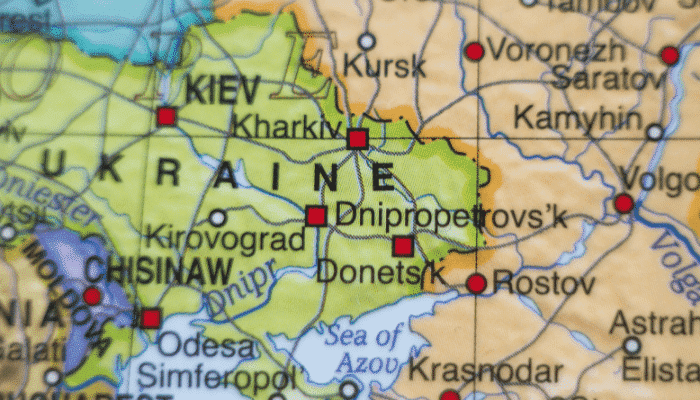
A famous 18th-century Russian folktale mentions a Cuman Prince called Azzam or Assuff, who died while defending his town lying on the northern coast of the sea. Hence, it is also believed that the sea was named so in his honour and is known as the Sea of Azoff.
In the times of antiquity, it was called the Maeotis Swamp as it was covered with marshy areas and wetlands in the northeast. Ancient historians are unclear whether it was named so after the Meotians, the inhabitants of the coastal settlements or after the region’s geographical characteristics. Pliny recorded the Meotians, referring to it as the sea of Temarunda or the mother of waters.
3. Two major European rivers flow into the Azov Sea
Azov sea is enriched by the waters of the Don River, the fifth-longest in Europe. It flows through the Central Russian region and drains into the Azov Sea in the Caucasus. One of the main rivers of Russia, it is also a critical inland waterway.
The Kuban river delta forms a major rice-growing region of Russia and also supports the fisheries sector. Apart from the Don and Kuban rivers, which account for 90% of water inflows, numerous small river systems like the Yeya, Beysung, Berda, Kalmius, Atmanai, Molocha and Mius rivers also flow into the Azov sea.
Rich in minerals and nutrients, these rivers also carry sand, silt and shells, creating unique geological formations in the form of narrow sandbanks called spits, bays and limans, which are enlarged estuaries forming lagoons.
The river depositions create a low coastline and a comparatively flat and smooth seabed with a steadily increasing water depth. Azov sea becomes denser towards its centre and has high quantities of biomass like green algae and phytoplankton, which impacts the colour of the seawater.
4. One of the longest spits in the world, Arabat Spit is located in the Azov Sea
The Arabat spit, also called the Arabat arrow, is a sandbar lying in the western part of the sea. Named after a 17th-century Turkish military fort located at the southern tip of the spit, the Arabat arrow spans over 112 kilometres and is one of the longest spits on the planet. Other prominent spits like Fedotov spit, Achuevsk and Obitochna spit, covering more than 30 km, are also located in the Azov sea. A unique characteristic of these formations is that they stretch from the north to the south and constantly change their shape every few years.
Arabat Spit separates the region’s salty and shallow lagoon waters, Sivash, from the Sea of Azov. Also known as the Putrid sea or the Rotten sea, the Sivash lies on the western coast of the Azov Sea with a water depth ranging from 1 to 3 m. The lagoons of Sivash are wide and shallow resulting in high salinity due to faster water evaporation; hence the region is known for salt production.
Over 10,000 km2, Sivash is connected to the Azov sea via the Henichesk Strait. Bordering the northeastern coastline of the central Crimean peninsula, Sivash serves as a natural border for Crimea. According to international norms, east and central Sivash was recorded as wetlands of Ukraine; however, after the 2022 Russian invasion of Ukraine, the entire Sivash region came under Russian occupation.
Azov sea also houses one of the most expansive bays. Covering 2,200 square miles, the Taganrog Bay is the largest Bay situated in the northeastern part of the Azov sea.
5. Azov sea has a continental climate
Azov sea is surrounded by land on all sides and is a relatively small water body. Hence it has a temperate and continental climate with short winters and hot and dry summers.
The transition period from autumn to winter is marked by the Siberian Anticyclone that carries cold, dry air from the Siberian regions, which lowers the water temperature even further. Due to a lack of water depth and low salinity, it is susceptible to freezing during peak winter. Visibility is disrupted due to heavy fog and frost. Before the invention of icebreakers, the sea was not navigable during winters.
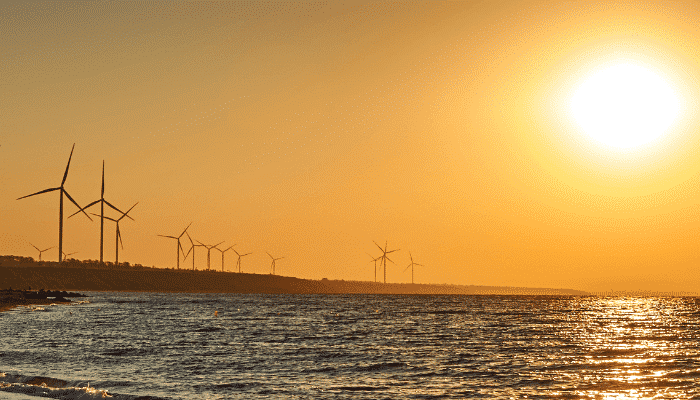
However, in summers, the Azov sea usually records a maximum temperature of 40 °C due to weaker winds which bring much rainfall. The southwesterly winds also create strong water currents and storms with waves raging as high as 6 m near Taganrog bay.
The sea does not witness tidal variations, but the water level fluctuates up to 250 to 500 mm due to variations in river water outflows.
6. Azov Sea sustains a rich marine biodiversity
The brackish waters of the Azov sea contain diverse flora and fauna, making it a unique marine ecosystem. More than 80 species of fish and 300 invertebrates are commonly found in its waters. Gray mullets, sardines, minnows, sea roaches, bream, anchovy, molluscs, worms and crustaceans dominate the Azov sea. Numerous wildflower and plant species like the sedges, seaweed, water lilies and sacred lotus grow in the Azov sea, adding to its beauty.
Around 600 phytoplankton algae are found in the sea, with diatoms, green algae, pyrophytes, euglena and blue-green algae being the most common species.
The shores of the sea are dotted with estuaries and marshes, some of which are national reserves. These areas are a haven for bird lovers as numerous unique species of birds are found here. Waterfowls, ducks, wild geese, pelicans and cormorants are common, along with terrestrial animals like wild boar, muskrats, weasels, foxes, and wild cats.
7. Fishing is a major economic activity in the Azov sea
A regular supply of vital nutrients from 20 rivers, low water salinity and high water temperatures during summers combined with longer vegetation has increased the Azov sea’s biological productivity.
This has led to the development a prominent fishing industry on its shores. Ukraine and Russia export more than 45% of the catch. However, Russia dominates the Azov sea after the 2022 Russian invasion of Ukraine. It even detained four local Ukrainian fishermen for operating their vessels in its waters.
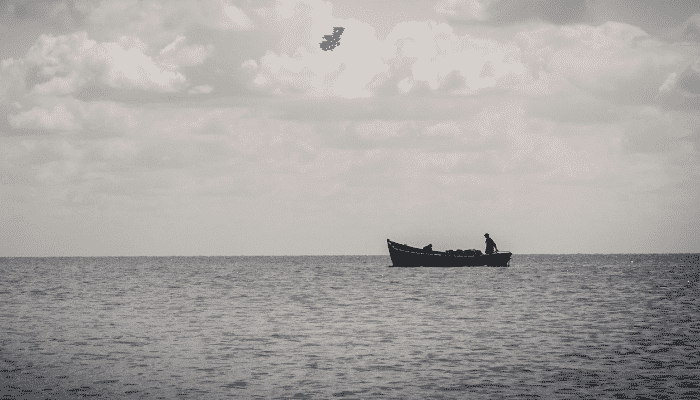
Though rich in perch, whitefish, herring, plaice, mackerel, and carp, which are quite relished, the Azov sea has witnessed a decline in the aforementioned fish species, a result of over-exploitation, decrease in water flow due to the construction of dams and large-scale cultivation of cotton on the coastline. Anchovy fisheries have collapsed, and catching perch is restricted due to their rapidly declining populations.
8. A popular vacation spot in Eastern Europe
A widely preferred holiday destination, the Azov sea offers many exciting activities for people of all ages. Its warm waters and wide sandy beaches are perfect for those trying to break from everyday life’s hustle-bustle.
The coastline of the Azov is dotted with health resorts offering unique mud therapy and hydromassage. People suffering from different types of arthritis visit Lake Grubitskoye, adjacent to the Azov sea, since it is known for its therapeutic properties due to the presence of vital elements and minerals.
The resort town called Golubitskaya lies near the Taman peninsula, housing many resorts, hotels, cafes, clubs and fresh food markets, attracting thousands of tourists. Water sports fans visit the Azov coast to enjoy Kitesurfing, windsurfing and scuba-diving. Other recreational facilities like an Amazon-type water park, swimming pools, Lukomorye zoo, the Nemo aquarium, and the Dinopark keeps the children engaged.
9. Azov Sea plays a vital role in maritime trade
Azov sea is connected to the Atlantic Ocean through the Black, Aegean, Marmara and Mediterranean seas. As the steppes around the Azov sea became populated in the 19th century and railway lines connecting the sea with the interiors were laid, the Azov sea facilitated maritime trade and commerce.
Once the Volga-Don canal was completed, it increased the significance of the Azov sea since the Don and Volga rivers and cities like Moscow became directly accessible. It also offered the shortest route from the Russian mainland by linking the Caspian sea to the nearby oceans. Freight ships carrying hard coal from Donbas, iron ores from Kerch, construction material, metals, fish, grains, wood and salt can be seen on its horizon.
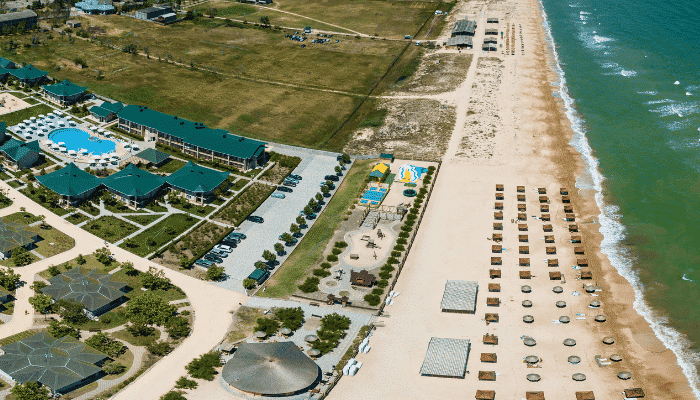
Today, the Azov sea coast is marked by major Russian and Ukrainian ports such as Rostov-na-Donu, Taganrog, Mariupol and Berdiansk. These facilities remain operational throughout the year due to the presence of icebreakers.
10. Site of many historical military campaigns and battles
In the medieval period, two major powers of the time, the Ottoman empire of Turkey and the Russian empire were intertwined in a fierce battle for complete control over the Azov Sea, culminating in the Russo-Turkish war.
Peter, I led a series of military campaigns from 1686 to 1700 comprising two sieges. The first involved 31,000 foot soldiers; however, it was unsuccessful. During the second siege under the leadership of commander Aleksei Shein, the Russian naval fleet and ground forces ousted the Turks from their garrison fort. Azov sea went into Russian hands; however, with the Treaty of Pruth, the Black Sea and Azov sea were returned to the Ottoman empire.
The Crimean war was another significant historical battle fought in the Azov Sea. In this military conflict, the Ottoman Turks, France and Britain joined hands against the Russian forces to counter the growing Russian dominance. It ended with the defeat of Russia and the signing of the Treaty of Paris.
During the second world war, the Battle of the Sea of Azov was fought on its northern coast during Operation Barbarossa. It resulted in the Axis powers’ victory and the red army’s defeat.
It was only in 2003 that Russia and Ukraine entered into a formal agreement to share the waters of the Azov Sea and Kerch Strait.
Frequently Asked Questions
1. Why is the Azov Sea so shallow?
The rivers like Don, Kuban etc., which flow into the sea, bring silt, sand and shells, ultimately forming several bays, spits and limans. These deposits make the seafloor relatively smooth and flat, with its depth gradually increasing in the middle.
2. Are there sharks in the Sea of Azov?
Azov sea is connected to the Black sea by the narrow strait of Kerch. The two water bodies share enormous biodiversity, including various shark species, grey seals and dolphins.
3. Who dominates the Azov Sea?
According to the neighbouring countries and the Ukrainian naval forces, large parts of the Azov sea are controlled by Russia. Since its attack on Ukraine, it has tried to assert its dominance even more.
4. What is the Azov Sea known for?
It is the world’s shallowest sea, with a depth of only 46 feet or 14 m. Water from the Azov sea flows into the Black sea, and due to this exchange, it retains freshwater with low salinity.
5. Does the Azov sea freeze?
Azov sea freezes annually for two to five months. Ice begins to form in Taganrog Bay in late November. The water freezes from mid-October to mid-January in its north and northeastern parts.
You might also like to read:
- 10 Caspian Sea Facts You Must Know
- 10 Amazing Facts about Baltic Sea
- 10 Interesting Facts About The Tasman Sea
- 8 Facts About Waterspouts at Sea
- 10 Amazing Facts About The Aral Sea
Disclaimer: The author’s views expressed in this article do not necessarily reflect the views of Marine Insight. Data and charts, if used, in the article have been sourced from available information and have not been authenticated by any statutory authority. The author and Marine Insight do not claim it to be accurate nor accept any responsibility for the same. The views constitute only the opinions and do not constitute any guidelines or recommendations on any course of action to be followed by the reader.

About Author
Raunek Kantharia is a marine engineer turned maritime writer and entrepreneur. After a brief stint at the sea, he founded Marine Insight in 2010. Apart from managing Marine Insight, he also writes for a number of maritime magazines and websites.
Do you have info to share with us ? Suggest a correction
Subscribe To Our Newsletters
By subscribing, you agree to our Privacy Policy and may receive occasional deal communications; you can unsubscribe anytime.



